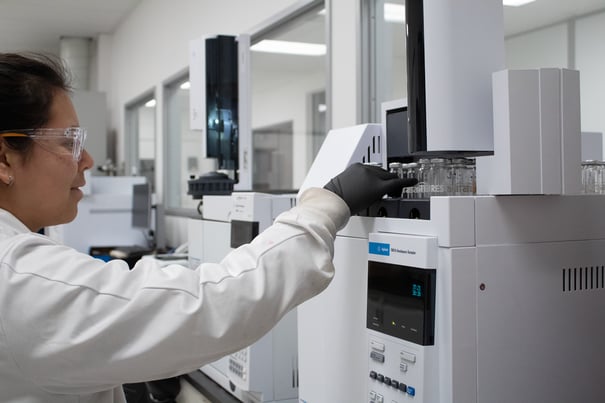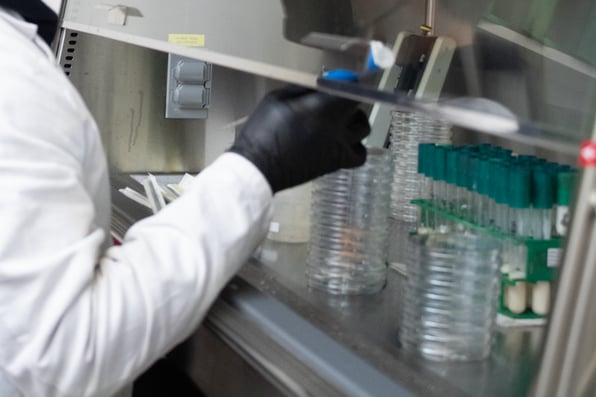Reviewed and Approved by Lisa El-Shall, Senior Director Drugs and Devices, EAS Consulting Group
1-Minute Summary
- 21 CFR 211 outlines cGMPs for OTC drug laboratory testing, crucial for product safety and compliance.
- Mandatory tests include conformance to your specifications for identity and strength of each active ingredient for components, in-process materials, and finished drug products.
- Stability testing is also required to establish an expiration date.
- Specialized testing is required for sterility and pyrogen-free claims in certain drugs.
- Recordkeeping is critical, as per CFR 211.194 – In the eyes of the FDA, if it's not documented, it didn’t happen.
Understanding 21 CFR 211 for OTC Drug Manufacturers
Deciphering the requirements outlined in FDA and other regulations can be frustrating. Gray areas sometimes cause confusion and can inadvertently cause you to fail to meet regulatory requirements. Such might be the case for manufacturers of over-the-counter (OTC) drug products when trying to understand the requirements for laboratory testing as defined in 21 CFR Part 211.
21 CFR Part 211 outlines current Good Manufacturing Practices (cGMP) for manufacturing, processing, packing, or holding of drugs, including OTC drug products. 21 CFR Part 211 ensures that OTC drugs meet quality standards and are safe and effective for public consumption.
For quality control professionals in the pharmaceutical industry, understanding and implementing these guidelines is paramount to avoid costly regulatory penalties and, more importantly, to safeguard public health.
In this article, we explain the requirements for laboratory testing of OTC drug products as defined in 21 CFR Part 211. Let’s get started.
OTC Drug Product Definition
First, we must define our terms. FDA defines a “drug product” as…
Drug product means a finished dosage form, for example, tablet, capsule, solution, etc., that contains an active drug ingredient generally, but not necessarily, in association with inactive ingredients. The term also includes a finished dosage form that does not contain an active ingredient but is intended to be used as a placebo. 21 CFR 210.3(b)(4)
Remember, this includes products intended for use in the diagnosis, cure, mitigation, treatment, or prevention of disease.
It also covers products (other than food) intended to affect the structure or any function of the body of humans, such as dandruff shampoo, anti-aging cream, or acne treatments.

General Requirements for Laboratory Controls (21 CFR 211.160)
Laboratory testing under 21 CFR Part 211 is a major component of cGMPs, including testing your components and finished product to verify specifications and safety.
Establishment of Laboratory Controls
It all starts with establishing sound laboratory controls, as mandated in 21 CFR 211.160. These controls shall include…
- Establishment of scientifically sound and appropriate specifications, standards, sampling plans, and test procedures designed to assure that components, drug product containers, closures, in-process materials, labeling, and drug products conform to appropriate standards of identity, strength, quality, and purity.
Once you’ve established these controls, where do you apply them throughout your manufacturing process with respect to your OTC drug products? 21 CFR Part 211.160(b)(1-3) tells us:
- Determination of conformity to applicable written specifications for the acceptance of each lot within each shipment of components, drug product containers, closures, and labeling…
- Determination of conformance to written specifications and a description of sampling and testing procedures for in-process materials.
- Determination of conformance to written descriptions of sampling procedures and appropriate specifications for drug products.
21 CFR 211.160 defines three points in your process where OTC laboratory testing is required: for your components, in-process materials, and finished drug products.
Testing and Release for Distribution (21 CFR 211.165)
Now that we know where in the manufacturing process we must conduct laboratory testing for OTC drug products, let’s look more closely at what must be tested prior to release and distribution. 21 CFR Part 211.165 provides details.
- For each batch of drug product, there shall be appropriate laboratory determination of satisfactory conformance to final specifications for the drug product, including the identity and strength of each active ingredient, prior to release. 21 CFR 211.165(a)
- There shall be appropriate laboratory testing, as necessary, of each batch of drug product required to be free of objectionable microorganisms. 21 CFR 211.165(b)
So, regulations clearly state that each batch of your OTC drug product must be tested to ensure that your specifications for identity and strength are met. In addition, you must test for objectionable microorganisms in products required to be free of them.

OTC Product Stability Testing (21 CFR 211.166)
Stability testing is required for OTC drug products. As the regulations state:
- There shall be a written testing program designed to assess the stability characteristics of drug products. The results of such stability testing shall be used in determining appropriate storage conditions and expiration dates. 21 CFR 211.166(a)
OTC drug product regulations say that you must include an expiration date on the label backed by scientifically valid stability testing [see 21 CFR 211.137(a)].
The written testing program must include several definitions, such as sample size, test intervals, storage conditions, test methods, and more.
Designing a stability testing protocol can be a challenge considering the regulatory requirements and various storage conditions. Our team can help provide guidance for your stability testing protocol.
Read our Guide to OTC & Cosmetic Stability Testing here for more information.
Special Testing Requirements (21 CFR 211.167)
21 CFR Part 211.167 includes requirements for additional laboratory testing for certain products that must be sterile and/or pyrogen-free.
Pyrogens are substances, typically bacterial endotoxins, that can cause fever when they enter the bloodstream, making it vital to test for their presence for manufacturers of certain pharmaceuticals and medical devices. Here’s what the regulations say:
- For each batch of drug product purporting to be sterile and/or pyrogen-free, there shall be appropriate laboratory testing to determine conformance to such requirements. 21 CFR 211.167(a)
- For each batch of ophthalmic ointment, there shall be appropriate testing to determine conformance to specifications regarding the presence of foreign particles and harsh or abrasive substances. 21 CFR 211.167(b)
- For each batch of controlled-release dosage form, there shall be appropriate laboratory testing to determine conformance to the specifications for the rate of release of each active ingredient. 21 CFR 211.167(c)
This means you may need to conduct sterility testing, chemistry analysis for foreign particles, or dissolution testing, in addition to the laboratory testing requirements already mentioned.
Maintain Thorough Laboratory Records (21 CFR 211.194)
Although reviewing the regulations for laboratory recordkeeping lies outside the scope of this article, it’s important to note that CFR 211 includes regulations for maintaining laboratory records. There’s a saying when it comes to FDA regulations and records:
If it’s not written down, it didn’t happen.
The regulations in 21 CFR 211.194 outline the data you must maintain, including descriptions of samples taken, test methods used, records of all results obtained in the course of each test, and much more.
Be sure to review this section of the regulations to ensure compliance.
Recap: Required Laboratory Testing for OTC Drug Products
To summarize, the laboratory testing you must perform on your OTC drug products depends on the product itself. An ophthalmic solution, for example, will require sterility testing, while dandruff shampoo will not.
However, 21 CFR 211 outlines three primary areas where in the manufacturing process laboratory testing is required to ensure conformance to your written product specifications:
- Acceptance of each lot within a shipment of components and other raw materials
- In-process materials
- Finished drug product
We also know that you must test each batch for conformance to your written specifications for identity and strength of each active ingredient.
Regulations also state that you must test for objectionable microorganisms in a drug product that should be free of them.
Also, OTC drug products require expiration dates on their labels, which necessitates stability testing.
Finally, remember the requirements for certain products that purport to be sterile and/or pyrogen-free, as outlined in 21 CFR 211.167.
Need Help Deciphering the OTC Laboratory Testing Requirements?
We understand the confusion inherent to regulations. We also understand what’s at stake.
Our regulatory arm, EAS Consulting, can help you cut through the confusion and understand the requirements for your OTC drug products.
When you’re ready to design your testing protocol, our team at Certified Laboratories can conduct your laboratory testing to provide the data you need to verify product safety and quality.
Reach out and we’ll be happy to help.
